Connect With Us
Items filtered by date: December 2024
Athlete's Foot and Its Potential to Spread
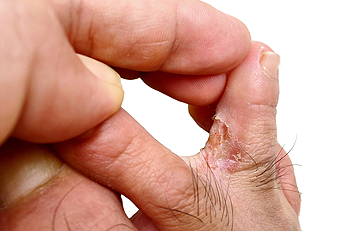
Athlete's foot is a fungal infection that commonly affects the skin on the feet, particularly between the toes. It is caused by fungi that thrive in warm, moist environments, such as sweaty socks and shoes. Symptoms include itching, redness, peeling, and sometimes blisters. While athlete's foot primarily affects the feet, it can spread to other areas of the body if not treated properly. The infection can spread to the hands if a person touches the affected area and then touches other parts of their body. Additionally, the fungus can spread to the nails or even the groin area in some cases. It is important to maintain good foot hygiene and treat the infection promptly with antifungal medications to prevent it from spreading to other areas. If you have developed athlete’s foot, it is suggested that you promptly consult a podiatrist who can effectively treat this condition, which often includes prescribed medication.
Athlete’s Foot
Athlete’s foot is often an uncomfortable condition to experience. Thankfully, podiatrists specialize in treating athlete’s foot and offer the best treatment options. If you have any questions about athlete’s foot, consult with one of our podiatrists from Podiatry Health Center. Our doctors will assess your condition and provide you with quality treatment.
What Is Athlete’s Foot?
Tinea pedis, more commonly known as athlete’s foot, is a non-serious and common fungal infection of the foot. Athlete’s foot is contagious and can be contracted by touching someone who has it or infected surfaces. The most common places contaminated by it are public showers, locker rooms, and swimming pools. Once contracted, it grows on feet that are left inside moist, dark, and warm shoes and socks.
Prevention
The most effective ways to prevent athlete’s foot include:
- Thoroughly washing and drying feet
- Avoid going barefoot in locker rooms and public showers
- Using shower shoes in public showers
- Wearing socks that allow the feet to breathe
- Changing socks and shoes frequently if you sweat a lot
Symptoms
Athlete’s foot initially occurs as a rash between the toes. However, if left undiagnosed, it can spread to the sides and bottom of the feet, toenails, and if touched by hand, the hands themselves. Symptoms include:
- Redness
- Burning
- Itching
- Scaly and peeling skin
Diagnosis and Treatment
Diagnosis is quick and easy. Skin samples will be taken and either viewed under a microscope or sent to a lab for testing. Sometimes, a podiatrist can diagnose it based on simply looking at it. Once confirmed, treatment options include oral and topical antifungal medications.
If you have any questions, please feel free to contact our office located in Dothan, AL . We offer the newest diagnostic and treatment technologies for all your foot care needs.
Causes of Diabetic Foot Pain
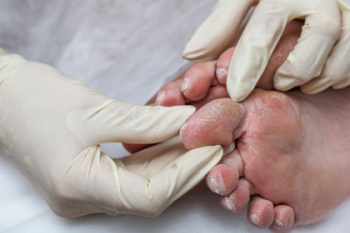
Diabetic foot pain is common among people with diabetes, often stemming from diabetic neuropathy and peripheral vascular disease. Diabetic neuropathy occurs when elevated blood sugar levels damage the nerves in the feet, leading to numbness, tingling, or burning pain. This condition can also reduce the ability to sense injuries, increasing the risk of ulcers or infections. Peripheral vascular disease involves poor circulation caused by hardened arteries. This slows down healing of cuts or sores and may result in more severe complications, such as tissue damage. Both conditions primarily affect the feet, toes, and ankles. A podiatrist can evaluate your foot health, monitor nerve function, and recommend treatment to address pain or prevent complications like ulcers and infections. If you have foot pain as the result of diabetes, it is suggested that you schedule regular appointments with a podiatrist who can help you to manage this serious conditon.
Diabetic foot care is important in preventing foot ailments such as ulcers. If you are suffering from diabetes or have any other concerns about your feet, contact one of our podiatrists from Podiatry Health Center. Our doctors can provide the care you need to keep you pain-free and on your feet.
Diabetic Foot Care
Diabetes affects millions of people every year. The condition can damage blood vessels in many parts of the body, especially the feet. Because of this, taking care of your feet is essential if you have diabetes, and having a podiatrist help monitor your foot health is highly recommended.
The Importance of Caring for Your Feet
- Routinely inspect your feet for bruises or sores.
- Wear socks that fit your feet comfortably.
- Wear comfortable shoes that provide adequate support.
Patients with diabetes should have their doctor monitor their blood levels, as blood sugar levels play such a huge role in diabetic care. Monitoring these levels on a regular basis is highly advised.
It is always best to inform your healthcare professional of any concerns you may have regarding your feet, especially for diabetic patients. Early treatment and routine foot examinations are keys to maintaining proper health, especially because severe complications can arise if proper treatment is not applied.
If you have any questions please feel free to contact our office located in Dothan, AL . We offer the newest diagnostic and treatment technologies for all your foot and ankle needs.
Causes of an Achilles Heel Spur
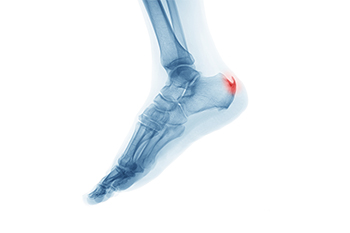
An Achilles heel spur is a bony growth that develops on the heel bone, typically where the Achilles tendon attaches. It is often the result of repeated stress or strain on the tendon, leading to the formation of extra bone in the area. Common causes include overuse, wearing poor footwear, or activities that put excessive pressure on the heel like running and jumping. Individuals with tight calf muscles or an abnormal gait may also be at higher risk. Symptoms of an Achilles heel spur are pain and tenderness at the back of the heel, particularly when walking, running, or standing for long periods. In some cases, swelling and a visible bump may appear on the heel. If you have developed this type of heel spur, it is suggested that you consult a podiatrist who can accurately diagnose and treat various types of heel spurs.
Heel spurs can be incredibly painful and sometimes may make you unable to participate in physical activities. To get medical care for your heel spurs, contact one of our podiatrists from Podiatry Health Center. Our doctors will do everything possible to treat your condition.
Heels Spurs
Heel spurs are formed by calcium deposits on the back of the foot where the heel is. This can also be caused by small fragments of bone breaking off one section of the foot, attaching onto the back of the foot. Heel spurs can also be bone growth on the back of the foot and may grow in the direction of the arch of the foot.
Older individuals usually suffer from heel spurs and pain sometimes intensifies with age. One of the main condition's spurs are related to is plantar fasciitis.
Pain
The pain associated with spurs is often because of weight placed on the feet. When someone is walking, their entire weight is concentrated on the feet. Bone spurs then have the tendency to affect other bones and tissues around the foot. As the pain continues, the feet will become tender and sensitive over time.
Treatments
There are many ways to treat heel spurs. If one is suffering from heel spurs in conjunction with pain, there are several methods for healing. Medication, surgery, and herbal care are some options.
If you have any questions feel free to contact our office located in Dothan, AL . We offer the latest in diagnostic and treatment technology to meet your needs.
Painful Ingrown Toenails
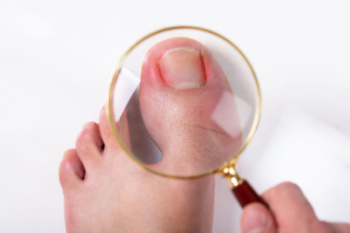
An ingrown toenail occurs when the edge of the nail grows into the surrounding skin, causing pain, redness, and swelling. In more severe cases, the area may become infected, with pus or drainage present. The condition often affects the big toe and can make walking or wearing shoes difficult. The most common causes of ingrown toenails are improper nail trimming, wearing tight shoes, or trauma to the toe. Other factors, such as poor foot hygiene, abnormal nail growth, or hereditary factors, can also contribute to the condition. Treatment options for ingrown toenails vary depending on severity. In mild cases, soaking the foot and properly trimming the nail may provide relief. In more severe or recurring cases, a podiatrist may need to perform a procedure to remove part of the nail or realign it to prevent future issues. If you are struggling with an ingrown toenail, it is suggested that you schedule an appointment with a podiatrist to receive expert care and effective treatment.
Ingrown toenails can become painful if they are not treated properly. For more information about ingrown toenails, contact one of our podiatrists of Podiatry Health Center. Our doctors can provide the care you need to keep you pain-free and on your feet.
Ingrown Toenails
Ingrown toenails occur when a toenail grows sideways into the bed of the nail, causing pain, swelling, and possibly infection.
Causes
- Bacterial infections
- Improper nail cutting such as cutting it too short or not straight across
- Trauma to the toe, such as stubbing, which causes the nail to grow back irregularly
- Ill-fitting shoes that bunch the toes too close together
- Genetic predisposition
Prevention
Because ingrown toenails are not something found outside of shoe-wearing cultures, going barefoot as often as possible will decrease the likeliness of developing ingrown toenails. Wearing proper fitting shoes and using proper cutting techniques will also help decrease your risk of developing ingrown toenails.
Treatment
Ingrown toenails are a very treatable foot condition. In minor cases, soaking the affected area in salt or antibacterial soaps will not only help with the ingrown nail itself, but also help prevent any infections from occurring. In more severe cases, surgery is an option. In either case, speaking to your podiatrist about this condition will help you get a better understanding of specific treatment options that are right for you.
If you have any questions please feel free to contact our office located in Dothan, AL . We offer the newest diagnostic and treatment technologies for all your foot and ankle needs.
Heel Pain Can Be Treated!
Explaining Ankle Impingement Injuries
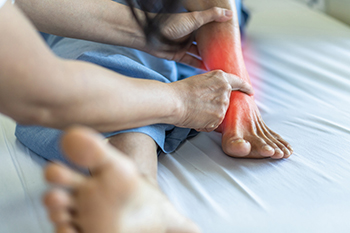
Ankle impingement is a painful condition where soft tissues or bony structures in the ankle become pinched, often following repetitive activities or past injuries like sprains. Ankle impingement can be categorized as anterior or posterior impingement, depending on the location of the pain. Anterior impingement is commonly seen in runners and athletes who frequently bend the ankle upward. This action causes pain in the front of the ankle, particularly during cutting or pivoting motions. Posterior impingement affects the back of the ankle. It is often experienced by dancers and athletes who repeatedly point their toes downward. Symptoms include swelling, reduced range of motion, and discomfort with specific movements. A podiatrist can diagnose ankle impingement through an examination and use X-rays or MRI scans to identify the cause and location of the pain. Treatment options include targeted exercises, orthotics, injections to reduce pain, and in some cases, surgery to restore ankle function. If you are suffering from ankle pain, it is suggested that you schedule an appointment with a podiatrist for treatment.
Ankle pain can have many different causes and the pain may potentially be serious. If you have ankle pain, consult with one of our podiatrists from Podiatry Health Center. Our doctors will assess your condition and provide you with quality foot and ankle treatment.
Ankle pain is any condition that causes pain in the ankle. Due to the fact that the ankle consists of tendons, muscles, bones, and ligaments, ankle pain can come from a number of different conditions.
Causes
The most common causes of ankle pain include:
- Types of arthritis (rheumatoid, osteoarthritis, and gout)
- Ankle sprains
- Broken ankles
- Achilles tendinitis
- Achilles tendon rupture
- Stress fractures
- Tarsal tunnel syndrome
- Plantar fasciitis
Symptoms
Symptoms of ankle injury vary based upon the condition. Pain may include general pain and discomfort, swelling, aching, redness, bruising, burning or stabbing sensations, and/or loss of sensation.
Diagnosis
Due to the wide variety of potential causes of ankle pain, podiatrists will utilize a number of different methods to properly diagnose ankle pain. This can include asking for personal and family medical histories and of any recent injuries. Further diagnosis may include sensation tests, a physical examination, and potentially x-rays or other imaging tests.
Treatment
Just as the range of causes varies widely, so do treatments. Some more common treatments are rest, ice packs, keeping pressure off the foot, orthotics and braces, medication for inflammation and pain, and surgery.
If you have any questions, please feel free to contact our office located in Dothan, AL . We offer the newest diagnostic and treatment technologies for all your foot care needs.

